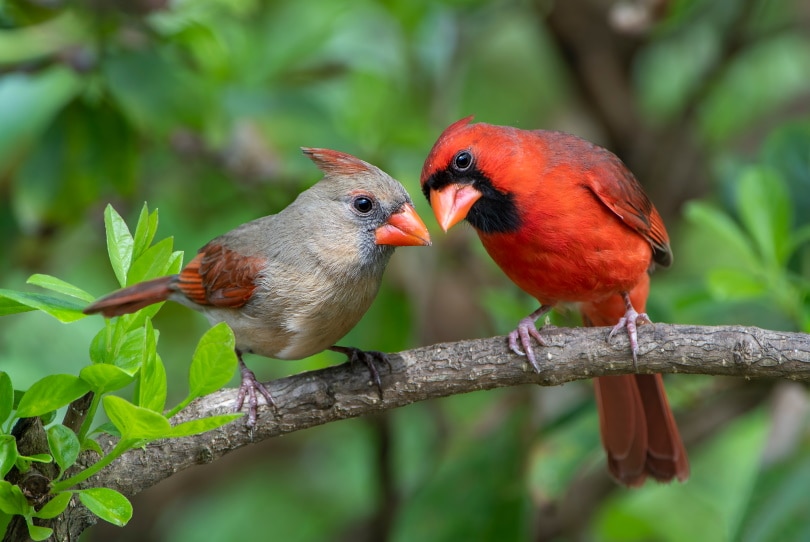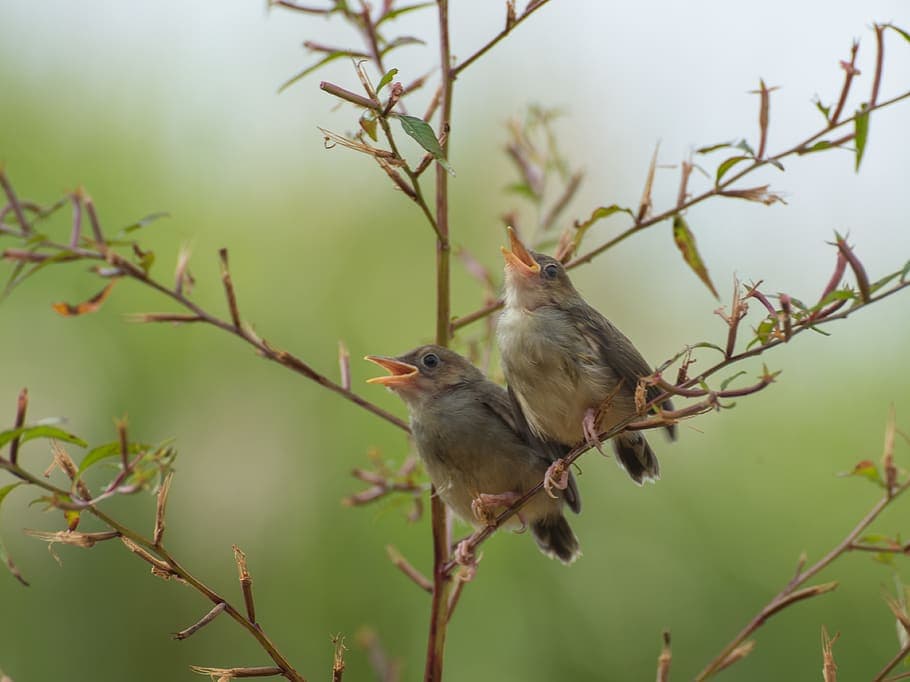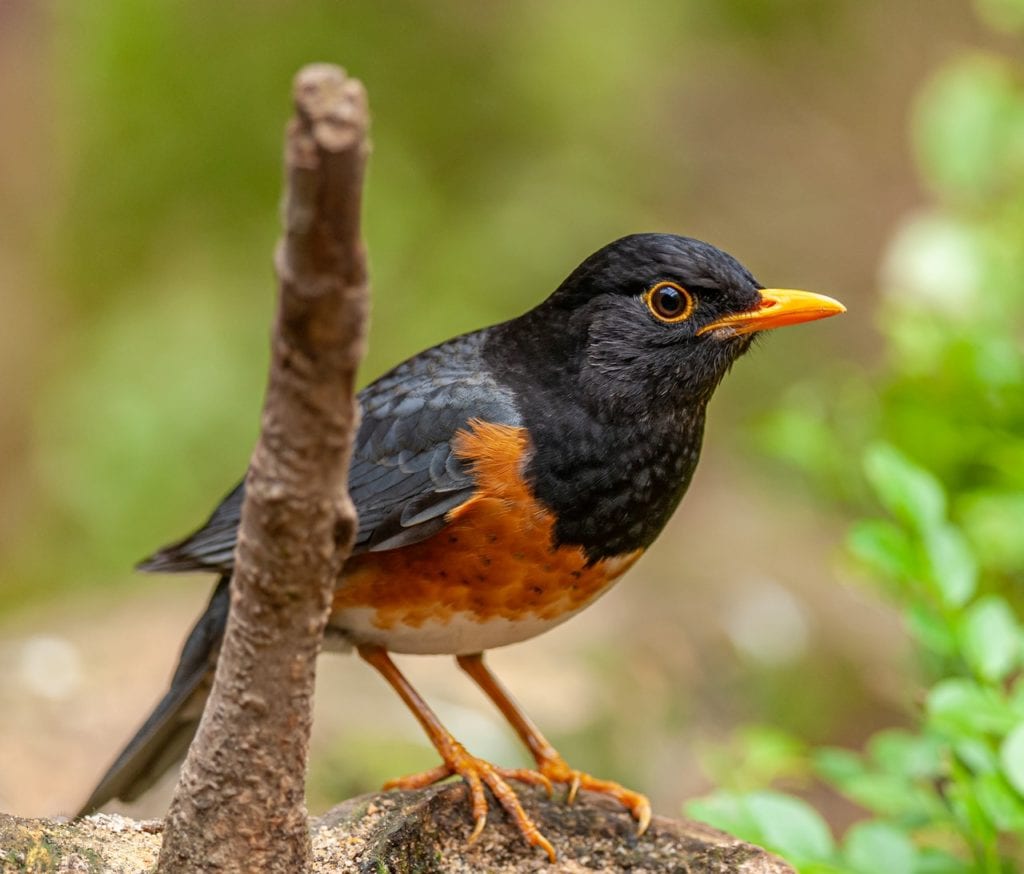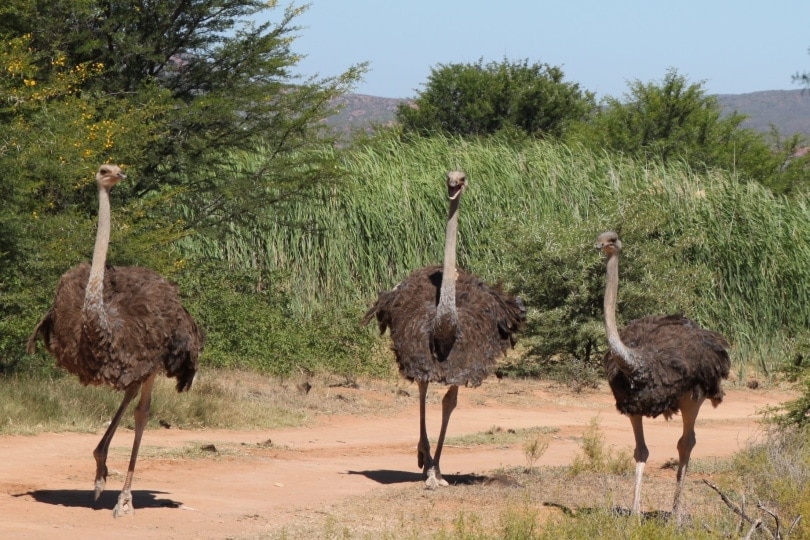Do Birds Have Tongues? What You Need To Know!
Last Updated on

Birds are fascinating creatures. There are so many different types of birds, and they all have their own unique features. You only have to see a few birds to realize how different they can look from one another—for example, eagles look very different from hummingbirds, penguins, and emus.
One question that newer bird enthusiasts often ask is whether birds have tongues. The answer to that question is yes, although you can watch birds for hours before you realize how many variations they hide inside their mouths. As with bird bills, bird tongues were designed specifically to facilitate a bird’s favored feeding method. In this article, we will take a closer look at the tongue of birds.

How Many Different Types of Bird Tongues Are There?
There are many different types of bird tongues, each adapted to the specific needs of the bird. Some tongues are long and slender, perfect for catching small insects in flight. Others are short and broad, ideal for scooping up food from the ground. Some birds even have barbs or bristles on their tongues that help them grip prey or extract seeds from the fruit. Overall, there are probably dozens of different types of bird tongues, each with its own unique functions and features.

How is a Bird’s Tongue Different From a Human Tongue?
Birds’ tongues are specially adapted to their feeding habits. Many have a long, pointed tongue that can be extended far beyond the beak to capture food. The tip of the tongue is often covered in small, sharp spikes that help to grip prey. The surface of the tongue is often also covered in stickier saliva that helps to hold food on the tongue. Human tongues are not as specialized as they are used for many different purposes, such as eating a much wider variety of foods and vocalizing a broader range of sounds.
What Are the Parts of a Bird’s Tongue?
Physiologically, bird tongues are different by species. A bird’s tongue is made up of both bones and cartilage, and this hyoid apparatus allows the tongue to move easily. Small tongues may only have cartilage, whereas larger tongues will have well-developed bones. The epithelium is a layer of cells that covers the tongue of birds. In some species of birds, such as parrots, ducks, swans, geese, and chickens, the tongue tips are hardened, and this is called the lingual nail. Their hard-tipped tongues, made of keratin, can be used like spoons to collect seeds and grains.
Birds of prey and geese have barb-like structures that are found on their tongues called papillae. Backward-facing barbs allow food to flow down to the gullet. All birds have salivary glands on their tongues and in the same way as human tongues, these produce saliva in order to keep bacteria and germs at bay. In addition to wetting the food, saliva also allows it to break down more easily.

What Are the Different Types of Bird Tongues?
The different types of bird tongues can be split into two main categories: protractile and non-protractile tongues. Protractile tongues are those that can be extended out from the beak, while the non-protractile tongues are fixed in place inside the mouth. The most common type of bird tongue is the protractile, flexible tongue, which is found in most songbirds and waterfowl.
Shapes & Sizes
Different types of bird tongues can also be classified by their shapes and sizes. Bird tongues can be short and stubby, like those of eagles, or long and slender, like those of hummingbirds. They can also be broad, like those of kestrels, or thin and pointed, like those of woodpeckers.
Colors & Markings
The tongues of different bird species exhibit a variety of colors and markings. Some birds, like the American robin, have pink tongues while others, like the blue jay, have blue tongues. The tongue of a hummingbird is often red or purple, and the tongue of a toucan is grey and slender. The markings on bird tongues can also be used to identify different species.

Sticky Tongues
Birds with sticky tongues use their specially adapted tongues to exploit a variety of food sources that other animals cannot access. The sticky nature of their tongues allows them to snatch insects off of leaves or branches, or to extract nectar from flowers. This adaptation is particularly useful for birds that live in areas with dense vegetation, as it allows them to access food that is hidden from other predators. In woodpeckers, the tip of their tongue can also be covered in a sticky substance that helps them catch insects.
Grooved Tongues
Birds that have grooved tongues are able to extract more nectar from flowers than those that do not. The grooves create a channel for the nectar to flow, and the hummingbird’s tongue is able to move more quickly and effectively in extracting the nectar. This adaptation allows these birds to feed on flowers that other birds cannot access, and ultimately results in them obtaining more food.
Temperature Regulation
Birds use their tongues in a special way to regulate their body temperature. Animals do not have sweat glands like humans. If you see a bird with its mouth open, it’s using its tongue to take in cool air and lower its body temperature.

Which Bird Has the Longest Tongue?
In Northern America, the bird with the longest tongue is the northern flicker. The tongue of the northern flicker can extend up to two inches beyond the tip of its beak. This makes it ideal for probing into anthills. Furthermore, the northern flicker produces sticky saliva due to its large salivary glands. The bird’s tongue gets re-coated every time it extends its tongue, which makes it a perfect trap for ants.
Can All Birds Stick Their Tongue Out?
The ability to protrude the tongue out of the mouth is a characteristic that is shared by a variety of animals, including many birds. This action is used for various purposes, such as drinking, cleaning their beak, and capturing prey. However, not all birds can stick their tongue out.
Which Bird Does Not Have a Tongue?
All birds have tongues, but flightless birds like emus, ostriches, and kiwis have very tiny ones. Usually, they are small, triangular, and don’t even reach the tip of their beaks. In addition, they don’t seem to serve any particular purpose as far as feeding and catching food is concerned.

Do Eagles Have Tongues?
Yes, but they aren’t that visible because they are quite short. Eagles have small tongues because their physiology is adapted to seizing prey with their talons. Their short tongues are therefore an adaptation to their predatory lifestyle. Like humans, eagles use their tongues to help them swallow.
- Related Read: Do Birds Have Ears? How Do They Hear?

In Conclusion
Birds have tongues, and they are a crucial part of their anatomy serving a variety of purposes. Their various tongue types have adapted to help them to catch the foods they like best. So, the next time you see a bird at your feeder, take a moment to appreciate its tongue!
Featured Image Credit: Bonnie Taylor Barry, Shutterstock
Table of Contents
- How Many Different Types of Bird Tongues Are There?
- How is a Bird’s Tongue Different From a Human Tongue?
- What Are the Parts of a Bird’s Tongue?
- What Are the Different Types of Bird Tongues?
- Which Bird Has the Longest Tongue?
- Can All Birds Stick Their Tongue Out?
- Which Bird Does Not Have a Tongue?
- Do Eagles Have Tongues?
- In Conclusion
About the Author Robert Sparks
Robert’s obsession with all things optical started early in life, when his optician father would bring home prototypes for Robert to play with. Nowadays, Robert is dedicated to helping others find the right optics for their needs. His hobbies include astronomy, astrophysics, and model building. Originally from Newark, NJ, he resides in Santa Fe, New Mexico, where the nighttime skies are filled with glittering stars.
Related Articles:
Can You Use Binoculars to Look At Stars? How to Choose the Right Pair
10 Types of Hummingbirds in Arkansas (With Pictures)
8 Types of Hummingbirds in Nebraska (With Pictures)
5 Types of Hummingbirds in Idaho (With Pictures)
3 Types of Hummingbirds in Mississippi (With Pictures)
8 Types of Hummingbirds in Kansas (With Pictures)
5 Types of Hummingbirds in West Virginia (With Pictures)
5 Types of Hummingbirds in Ohio (With Pictures)
